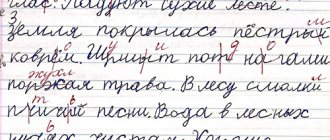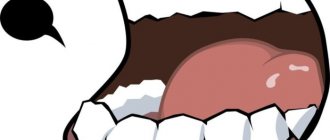Dyslexia begins to manifest itself most clearly in primary school.
At the age of 7-8 years, a child cannot cope with mastering reading skills. He confuses syllables, composes words slowly, and even if he can read a sentence, he cannot understand the meaning of what is being said. At the same time, the student is distinguished by a normal level of mental development and a rich imagination. Experts say that early treatment of dyslexia can eliminate the pathology or, at a minimum, help the child successfully cope with its manifestations. The disease is treated by a speech therapist or defectologist with a narrow specialization, but the therapeutic process must take place in close cooperation with the baby’s parents.
If your younger student has obvious difficulties in mastering reading skills or is at increased risk of developing this deviation, then the tasks and exercises presented below will suit you perfectly. They will help the student develop logical thinking and abstract concepts, develop reading and perception skills, and also increase concentration.
Articulation gymnastics
You should start your classes with warm-up exercises:
- inhale through the nose and exhale through the mouth;
- inhale - hold your breath for a few seconds - exhale;
- We take an incomplete breath and do not exhale the air completely.
This is followed by exercises that develop clarity and intelligibility of pronunciation. The child is asked to complete phrases with associative sounds:
- a fly flies around the room “z-z-z”;
- the dog growls at the cat “rrrr”;
- a snake crawls in the grass “sh-sh-sh”;
- a bumblebee lands on a flower “w-w-w”;
- a horse runs across the field “clack-clack-clack”, etc.
Take a deep breath and, on one exhale, read all the consonants in the line:
- KNSHLZZTSSBTMPVCHF;
- VMRGKTBDZSHCHZBCHVN;
- VDGBFKZRChPTKZRM;
- ChMKPBRVSFSHMZHDSHH.
Read the phrases slowly and clearly:
- ru-ru-ru - the keguru ran away;
- you-you-you - the cats meowed;
- chi-chi-chi - all the balls rolled.
Read in a whisper at a moderate pace:
- arna – arla;
- arzha – arch;
- arla – arma;
- arba - harp.
Read out loud and as quickly as possible:
- burn – oven – lie down;
- door – worm – beast;
- chalk - stake - silt;
- fry - steam - burn.
Read aloud tongue twisters, sayings and proverbs:
- as is the fiber, so is the linen;
- whether they watered the lily, whether they saw Lydia;
- the ships tacked, tacked, but did not tack;
- Geese cackle on the mountain, a fire burns under the mountain;
- our duda is both here and there.
What causes dyslexia
Dyslexia is a partial impairment of the reading process caused by various reasons, including immaturity or impairment of higher mental functions.
The following reading characteristics in a child indicate dyslexia:
- phonemic problems associated with difficulties in recognizing phonemes, even in strong positions the child reads the word incorrectly (“Shenya” instead of “Zhenya”),
- analytical-synthetic problems , when a child allows distortions in the sound-syllable structure of a word (“nile” instead of “ruler”) or does not master the principles of syllable fusion (cannot read a word of several syllables at all).
- optical problems , which manifest themselves in difficulties in assimilating images of letters, their elements and in general with
- optical-spatial disorders and features of visual gnosis (the child does not orientate himself on the sheet, does not see the rulers).
- mnestic disorders , which manifest themselves in the inability to remember letters,
- agrammatical problems are typical for those children who have already mastered the skill of reading, but make mistakes during “fluent” reading. Or this is one of the signs of “guessing” reading, when a child reads the beginning of a word and then “substitutes” the wrong ending.
In semantic dyslexia, different mechanisms of impairment are observed:
- the wrong type of learning to read is letter-by-letter reading “book-staging” (when a child, instead of a word, reads a list of individual letters: B, A, B, A),
- poor vocabulary,
- poor level of mastery of grammar (the child knows “pencil” and “ruler” separately, but after reading the task “show the ruler with a pencil”, he cannot complete it).
Dyslexia is often mixed, when a child has different types of reading impairments. This happens if a child had severe speech impairments before school, or was silent for a long time, or these are combined disorders in the structure of other defects (with cerebral palsy, various syndromes).
If the child is physiologically and mentally healthy, studies according to the general education program, the school speech therapist deals with the problem.
If dyslexia is associated with problems of the child’s physical and mental health, then it is necessary to involve other specialists in the work - a child neurologist, psychologist, neuropsychologist, massage therapist.
Game "What's in the chest?"
For this exercise you need to make three-dimensional letters of the alphabet. They can be made from plasticine, clay, or cut out of hard cardboard. The lettering material is placed in a box or opaque bag. The child is offered several options for this game:
- It is necessary, without taking it out of the box, to identify the letter of the alphabet by touch and describe it. After this, take out the letter, make sure the answer is correct and make words with it. You can make the task more difficult by requiring that this particular letter be at the beginning, end, or middle of the word the child comes up with.
- The box contains letters that can be used to form several short words. The child takes out the letters, completes the task, and then comes up with sentences with the solved word.
Eliminating confusion in writing - the clay alphabet technique
Disorientation is often caused by isolated letters, which are visually confused with dyslexia. For example, a student may have difficulty distinguishing the letter "G" from a "T" due to their similar appearance. Or the letter “Ш” from “Ш”, due to the written and sound similarity.
Clay letters
The first step to solving dyslexia is to create the letters of the alphabet out of clay. The use of clay is explained by the fact that it is a physical three-dimensional object and includes a creative component. By casting letters from clay, the alphabet is no longer something arbitrary, but something made by a child.
By observing how the student forms letters and how they respond to the pronunciation of letter names, it is easy to identify the letters that are the “triggers” of disorientation, confusion and misperception, and immediately help the student overcome the discomfort caused by this letter.
The student models two complete alphabets, first uppercase letters, then lowercase letters. As each set of letters is mastered, the student remembers the correct shape, name, and sequence of each letter.
The creation of the alphabet is accompanied by similar work with punctuation marks. With this knowledge, the student can use an important learning tool that is available to the thinking child: the ability to research the meaning of words in the dictionary.
Game "ladder"
The child is asked to read words with different numbers of syllables, which are arranged in the form of a ladder: HEDGEHOG CANCER HIS LUM HORSE GIRL PRESIDENT GEAR SILKY
In this case, the student needs to complete several tasks:
- read the words located in the “ladder” from top to bottom;
- If you come across an incomprehensible word, you should find out what it means and read it several times;
- if the word is difficult to read in its entirety, it is necessary to divide it into syllables or letters, and then combine it into one whole;
- read the “ladder” from bottom to top.
What is dyslexia and its types
Dyslexia is a language learning disability. Dyslexia refers to a group of symptoms that cause people to have difficulty with certain language skills, especially reading. Dyslexia affects people throughout their lives; however, its impact may change at different stages of a person's life.
Dyslexia occurs in people of all backgrounds and intellectual levels. They are often gifted in art, computer science, design, and sports.
Types of dyslexia:
- Phonemic dyslexia
- Semantic dyslexia
- Agrammatic dyslexia
- Mnestic dyslexia
- Optical dyslexia
- Tactile dyslexia
Memorizing graphic expressions of words
Each star has a specific syllable written on it. It is necessary to compose words and circle them with multi-colored pencils (for example, crow, textbook, carpet, alphabet, teacher, etc.).
The second version of the exercise, or the game “Treasure Island”. The child needs to get to the treasure chest by making up words from the syllables written under the small islands. The composed words should be painted in different colors (for example, jungle, islands, etc.).
In order to improve perception and supplement the associative series, you can supplement the task with cards depicting the words that the child composes.
Exercises to correct dyslexia in primary schoolchildren
Each student is unique and therefore learns differently, so it is necessary to take advantage of the student's strengths and weaknesses. There is no perfect recipe, but it usually requires a lot of practice, routine, love and support.
One of the main exercises is reading. You need to read a lot. There are different ways to support your child's reading.
Listening to audio books will allow parents to read along with the student.
Search for favorite books. Each student has a book with his favorite hero, be it a knight or a good fairy, repetition of this work will benefit the child. This may be a little boring for parents, but it is essential for successful learning.
Discussion of stories that were read by the child and parent together.
Sea battle game
The exercise is aimed at improving the skills of analysis and synthesis of syllables, as well as the formation of the student’s vocabulary. The child is provided with a playing field with pictures of ships. Syllables are written on each drawn boat. An adult needs to name the coordinates of a sea vessel on the field, and a schoolchild needs to find the right cell and write out the syllable indicated in it. By finding the boats in the correct order, the student will be able to form words from the written syllables.
For example:
- (E5, B6) buh – that: bay;
- (D3, I8) beech – sire: tug;
- (B2, G10) pa – rum: steam;
- (G2, Z7, Z3) ko – slave – whether: ships;
- (D7, A9, E1) ka-pi-tan: captain.
Causes of dyslexia
The causes of dyslexia are varied - they can be organic, functional, biological, social. The history of children with this speech disorder includes many factors that influence throughout different periods of the child’s development.
Dyslexic disorders are often caused by organic damage to the speech centers of the cerebral cortex involved in organizing reading, delays in the maturation of these areas of the brain, and their improper functioning. Reading difficulties are often caused by long-term somatic illnesses in young children.
Causes of dysgraphia in a child and methods of its correction
A special place in the appearance of the disorder is occupied by social factors that create an unfavorable background that provokes the emergence of problems. This includes incorrect speech of loved ones, bilingualism (bilingualism), insufficient attention of parents to the speech development of children, limited, poor communication with the child, and an unfavorable situation in the family.
If a child has oral speech pathologies (FFN, OSR), it is more likely that he will suffer from dyslexia and dysgraphia.
In complex cases, dyslexic disorders may appear as part of a severe complex disorder. For example, with mental retardation, mental retardation, minimal brain dysfunction, in persons with visual or auditory defects, cerebral palsy.
Essentially, there are two global causes of dyslexia: congenital and acquired. According to research by specialists, heredity plays a large role in its appearance - yes, dyslexia is inherited.
Common etiologies of dyslexia:
- Minimal brain dysfunction;
- Fetal hypoxia and asphyxia during childbirth;
- Premature placental abruption;
- Jaundice in newborns;
- Hemolytic disease of the fetus;
- Toxic effects on the fetus of alcohol, nicotine and medications;
- Infectious diseases suffered by the child or mother during pregnancy (influenza, measles, rubella, chicken pox, herpes, polio), neuroinfections;
- Consequences of traumatic brain injury;
- Organic damage to the speech areas of the brain.
Also, the development of dyslexia can be affected by bilingualism in the family, pedagogical neglect of the child, lack of communication, thoughtless adherence by parents to early development methods, too early literacy training, or an incorrectly chosen method of reading development.
There is no such thing as dyslexia in preschoolers! To make this diagnosis, you must first try to teach the child to read, and this is done from the age of 7. It doesn't count before. If you were diagnosed with this in preschool age, you should contact another specialist. Normally, a “diagnosis of dyslexia” is appropriate by the end of the 2nd grade of primary school.
The acquired form is more common in adults, as a consequence of a stroke. People have to learn to read and write again. We will talk about it a little below.
Working on establishing correct word order
The task is aimed at improving the student’s understanding of the text he is reading. The task is to make sentences in accordance with the picture. The child needs to correctly fill in the blanks when describing the image. At the same time, it is important to ensure that the word order is correct and the sentences are constructed correctly.
The girl is riding. _______ _______ on _______. _______ _______ on _______ in_______. _______ _______ on _______ in _______ and ________.
Systematic implementation of such game exercises helps the student cope with the difficulties that arise when mastering reading skills. Dyslexics significantly improve their reading technique and quality, improve their skills in working with textual material, and also increase their self-esteem and self-confidence. At the same time, it is important to remember that only a specialist can correctly correct dyslexia, who will select the most suitable types of work and exercises for a particular form of the disease.
Publication date: 05/06/2019. Last modified: 01/13/2020.
How do symptoms of dyslexia manifest in younger schoolchildren?
It is necessary to be able to recognize the signs of dyslexia symptoms. The sooner a child's learning difficulties are identified, the sooner he or she will receive the proper instruction and environment necessary to succeed in school.
Common problems faced by people with dyslexia:
- Problems in learning speech.
- Problems learning letters and sounds.
- Inconsistency between written and spoken language.
- Problems in remembering numerals.
- Reading too quickly, preventing you from understanding the text.
- Inability to learn a foreign language.









